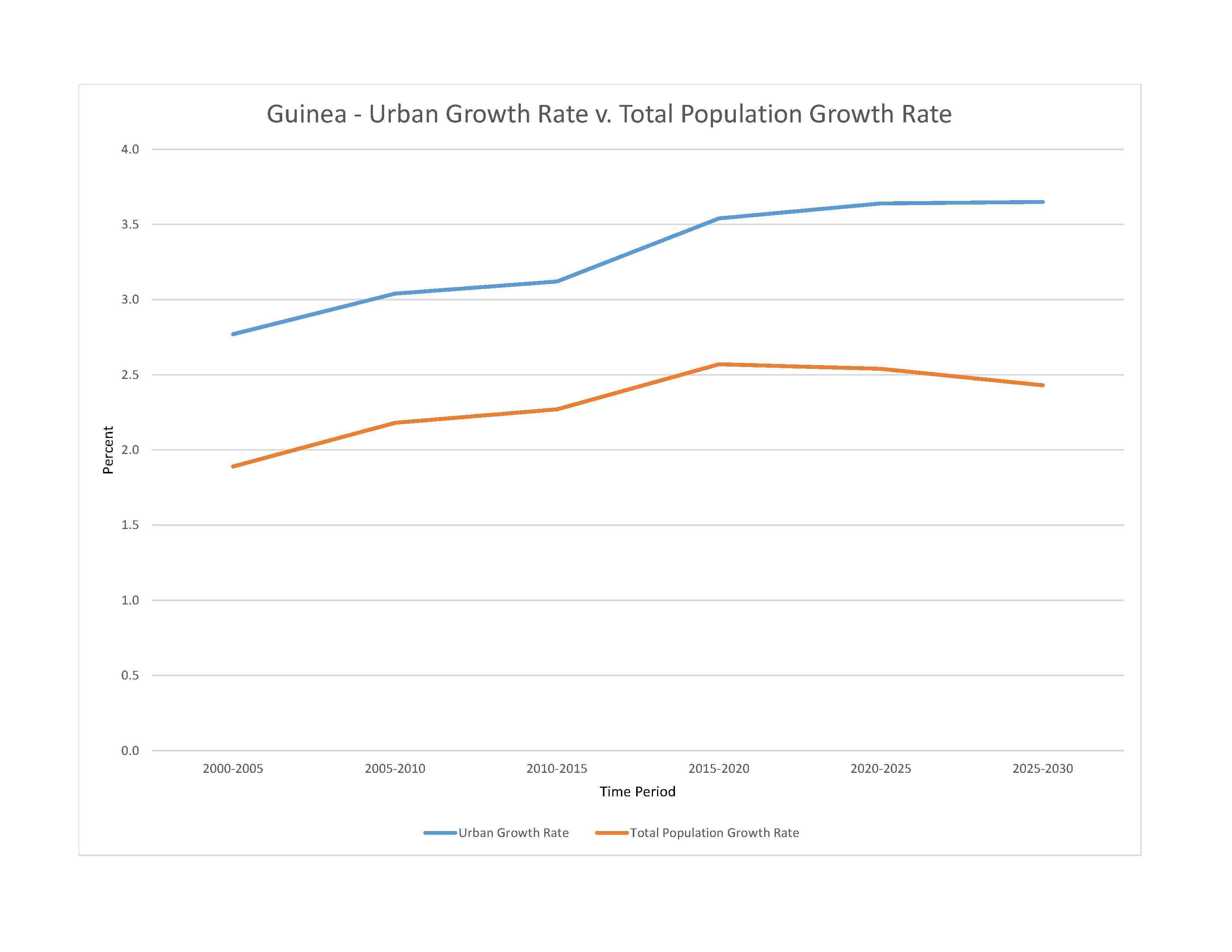
deforestation; inadequate potable water; desertification; soil contamination and erosion; overfishing, overpopulation in forest region; poor mining practices lead to environmental damage; water pollution; improper waste disposal
party to: Biodiversity, Climate Change, Climate Change-Kyoto Protocol, Climate Change-Paris Agreement, Comprehensive Nuclear Test Ban, Desertification, Endangered Species, Hazardous Wastes, Law of the Sea, Ozone Layer Protection, Ship Pollution, Wetlands, Whaling
signed, but not ratified: none of the selected agreements
generally hot and humid; monsoonal-type rainy season (June to November) with southwesterly winds; dry season (December to May) with northeasterly harmattan winds
agricultural land: 58.1% (2018 est.)
arable land: 11.8% (2018 est.)
permanent crops: 2.8% (2018 est.)
permanent pasture: 43.5% (2018 est.)
forest: 26.5% (2018 est.)
other: 15.4% (2018 est.)
urban population: 38.1% of total population (2023)
rate of urbanization: 3.64% annual rate of change (2020-25 est.)

severe localized food insecurity:due to reduced incomes - about 1.22 million people are projected to be in need of food assistance between June and August 2022, primarily due to food access constraints on account of the economic effects of the COVID-19 pandemic (2022)
4.81% of GDP (2018 est.)
0% of GDP (2018 est.)
particulate matter emissions: 37.57 micrograms per cubic meter (2019 est.)
carbon dioxide emissions: 3 megatons (2016 est.)
methane emissions: 11.13 megatons (2020 est.)
municipal solid waste generated annually: 596,911 tons (1996 est.)
municipal solid waste recycled annually: 29,846 tons (2005 est.)
percent of municipal solid waste recycled: 5% (2005 est.)
Niger river source (shared with Mali, and Nigeria [m]) - 4,200 km; Gambie (Gambia) river source (shared with Senegal and The Gambia [m]) - 1,094 km
note – [s] after country name indicates river source; [m] after country name indicates river mouth
Atlantic Ocean drainage: Niger (2,261,741 sq km), Senegal (456,397 sq km)
municipal: 230 million cubic meters (2020 est.)
industrial: 60 million cubic meters (2020 est.)
agricultural: 600 million cubic meters (2020 est.)
226 billion cubic meters (2020 est.)
NOTE: The information regarding Guinea on this page is re-published from the 2024 World Fact Book of the United States Central Intelligence Agency and other sources. No claims are made regarding the accuracy of Guinea 2024 information contained here. All suggestions for corrections of any errors about Guinea 2024 should be addressed to the CIA or the source cited on each page.
This page was last modified 04 May 24, Copyright © 2024 ITA all rights reserved.